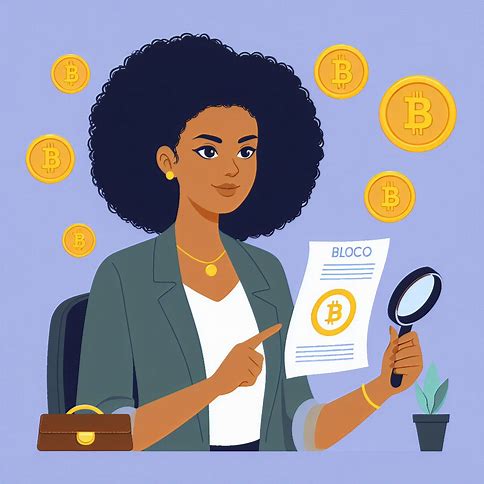Ever sent a transaction on the Solana network only to have it get stuck? No worries, there are steps you can take to deal with a stuck Solana transaction and get your funds moving again. We have covered the steps needed to get your Solana unstuck.
Common Causes of Stuck Solana Transactions
1. Insufficient Fee
Insufficient fees are one of the most frequent causes of stuck transactions. When you submit a transaction on the Solana network, you need to include a small fee to incentivize validators to process and confirm your transaction. If your fee is too low, validators may deprioritize your transaction, causing it to get stuck in the mempool (the holding area for unconfirmed transactions).
To avoid this issue, make sure you’re using a wallet that automatically calculates and includes an appropriate fee based on current network conditions. If you’re manually setting your own fee, consider increasing it slightly to improve your transaction’s chances of being picked up by validators.
2. Network Congestion
Another common cause of stuck transactions is network congestion. Like any blockchain, Solana has a limited capacity for processing transactions at any given time. During periods of high usage, such as when a popular NFT project launches or a major event occurs, the network can become congested with a backlog of pending transactions.
If your transaction gets submitted during a congested period, it may take longer than usual to confirm, or even get stuck. In these situations, the best course of action is often to simply wait it out. As the congestion clears and validators work through the backlog, your transaction should eventually go through.
3. Incorrect Recipient Address
It is very possible to make a simple typo or copy-paste error when entering a recipient address. But even a small mistake can cause big problems, as transactions sent to an invalid or incorrect address will typically get stuck.
To prevent this, always double and triple-check your recipient address before hitting send. Compare the address you’ve entered against the one provided by the recipient, and consider using QR codes or address book features in your wallet to minimize the risk of manual errors.
Troubleshooting Steps for Stuck Solana Transactions
1. Check the Transaction Status
The first step in troubleshooting a stuck transaction is to check its status on the Solana blockchain. Using a blockchain explorer like Solscan or Solana Beach, search for your transaction using its unique hash ID. This will show you whether your transaction is still pending, has been confirmed, or has failed for some reason.
If your transaction is still pending, it may simply need more time to be processed by the network. Check the “Age” or “Timestamp” field to see how long it’s been waiting – if it’s only been a few minutes, it’s probably nothing to worry about. But if it’s been stuck for hours or days, you may need to take additional steps.
2. Resend with a Higher Fee (Replace-by-Fee)
If you suspect that your stuck transaction is due to a low fee, you can try resubmitting it with a higher fee using a technique called “Replace-by-Fee” (RBF). This involves creating a new transaction with the same inputs and outputs as your stuck one, but with a higher fee.
Read Also: 5 Best Raydium Alternatives on the Solana Blockchain
To do this, you’ll need to use a wallet that supports RBF, such as the official Solana CLI wallet or a third-party wallet like Phantom. Consult your wallet’s documentation for specific instructions on how to perform an RBF transaction.
Keep in mind that even with a higher fee, there’s no guarantee that your transaction will be confirmed immediately, it may still take some time, depending on network conditions. And if your original transaction does eventually go through, you may end up paying the fee twice, so only use RBF if you’re confident that your original fee was indeed too low.
3. Contact the Recipient or Exchange
If your stuck transaction was sent to an exchange or merchant, it’s worth reaching out to their customer support team for assistance. Many exchanges have internal systems for handling stuck or failed transactions, and may be able to help you troubleshoot or even manually push your transaction through.
When contacting support, be sure to provide as much information as possible, including your transaction hash, the amount and type of asset sent, and any other relevant details. The more context you can give, the easier it will be for them to assist you.
4. Wait it Out
In some cases, the best course of action for a stuck transaction is simply to wait it out. Sometimes there may be high network traffic, causing a delay in your transaction. This may be frustrating and may require a little patience, but the transaction will eventually be sent through.
Solana is still a relatively new blockchain, and like any complex system, it can experience occasional hiccups and slowdowns. As the network matures and scalability improves, stuck transactions should become less common. In the meantime, try to stay calm and remember that, in most cases, your funds are not lost; they are just delayed.
Key Takeaways
1. Stuck transactions are a common issue on the Solana network, but there are steps you can take to troubleshoot and resolve them.
2. The most common causes of stuck transactions include insufficient fees, network congestion, and incorrect recipient addresses.
3. To avoid stuck transactions, always double-check your transaction details, use a wallet with appropriate fee settings, and be patient during periods of high network activity.
4. If your transaction gets stuck, start by checking its status on a blockchain explorer like Solscan or Solana Beach.
5. If your stuck transaction is due to a low fee, you can try resubmitting it with a higher fee using the “Replace-by-Fee” (RBF) technique.
6. If your stuck transaction was sent to an exchange or merchant, reach out to their customer support team for assistance.
7. In some cases, waiting it out may be the best course of action for a stuck transaction – remember that your funds are not lost, just delayed.
8. While stuck transactions can be frustrating, they are an unfortunate reality of blockchain life – but with knowledge and persistence, you can minimize their impact on your crypto activities.
Frequently Asked Questions
1. How long can a Solana transaction stay stuck?
The duration of a stuck transaction can vary depending on the underlying cause. If the issue is due to network congestion, the transaction may clear within a few hours as the backlog is processed. However, if the stuck transaction is due to an insufficient fee or an incorrect recipient address, it may remain stuck indefinitely until it is either replaced with a new transaction (in the case of a low fee) or the funds are returned to the sender (in the case of an invalid address).
2. Can I cancel a stuck Solana transaction?
Unlike some other blockchains, Solana does not have a built-in mechanism for canceling transactions. Once a transaction is submitted to the network, it cannot be canceled or reversed by the sender. However, if the transaction remains stuck due to a low fee, you can effectively “cancel” it by submitting a new transaction with the same inputs and a higher fee, which will replace the stuck one in the mempool.
3. Will I lose my funds if my transaction gets stuck?
In most cases, no. A stuck transaction simply means that your funds are temporarily in limbo, waiting to be processed by the network. As long as you have the correct recipient address and sufficient balance to cover the transaction amount and fee, your funds should eventually be delivered to the intended recipient. The only scenario where you may permanently lose funds is if you accidentally send them to an invalid or incorrect address.
4. Can I speed up a stuck transaction by paying a higher fee?
Yes, if your transaction is stuck due to a low fee, you can resubmit it with a higher fee using the “Replace-by-Fee” (RBF) technique. This will effectively replace your stuck transaction with a new one that has a higher priority for processing by the network. Keep in mind that you may end up paying the fee twice if your original transaction eventually goes through, so only use RBF if you’re confident that your original fee was too low.
5. What should I do if my transaction is stuck for a very long time?
If your transaction remains stuck for an unusually long period (e.g., several days or weeks) and you’ve already tried the troubleshooting steps outlined above, you may need to seek additional assistance. Consider reaching out to the Solana community on forums or social media, or contact the support team of your wallet or exchange for guidance. In rare cases, you may need to escalate the issue to the Solana developers for investigation and resolution.










